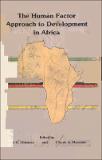| dc.contributor.author | Närman, Anders | |
| dc.coverage.spatial | Africa. | en |
| dc.date.accessioned | 2016-04-19T13:17:55Z | |
| dc.date.available | 2016-04-19T13:17:55Z | |
| dc.date.issued | 1998 | |
| dc.identifier.citation | Närman, A. (1998) The human factor and structural adjustment programmes. In: Chivaura, V.G. and Mararike, C.G. (eds.) The human factor approach to development in Africa. Harare: UZ Publications, pp. 171-181. | en |
| dc.identifier.isbn | 0-908307-74-8 | |
| dc.identifier.uri | https://opendocs.ids.ac.uk/opendocs/handle/20.500.12413/11285 | |
| dc.description | A narrative on how IMF recommended structural adjustment programmes (SAP's) are meant to dominate Africa's economic development policies thus alienating its human factor (HF) | en |
| dc.description.abstract | The intention of structural adjustment programmes, therefore, is to dominate the economic policies of developing nations as well as their social sectors. There is, therefore, strong Western influence of the education systems and health services of developing countries, although these may not be explicitly expressed in the SAP policies. One important factor is the scaling down of the stale and severe limiting of the allocation of funds to the social sectors. | en |
| dc.description.sponsorship | International Institute of Human Factor Development | en |
| dc.language.iso | en | en |
| dc.publisher | University of Zimbabwe (UZ) Publications | en |
| dc.rights.uri | http://creativecommons.org/licenses/by-nc-nd/3.0/ | en |
| dc.subject | Development Policy | en |
| dc.subject | Economic Development | en |
| dc.title | The human factor and structural adjustment programmes | en |
| dc.type | Book chapter | en |
| dc.rights.holder | © V. G. Chivaura and C. G. Mararike, University of Zimbabwe, 1998 | en |


